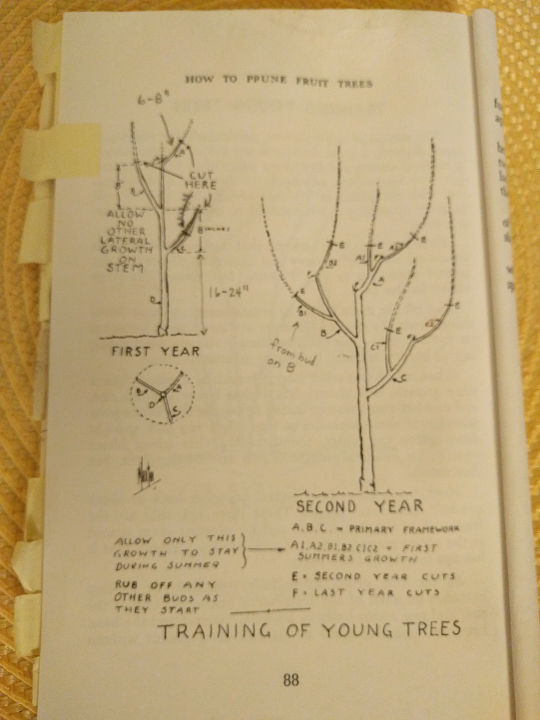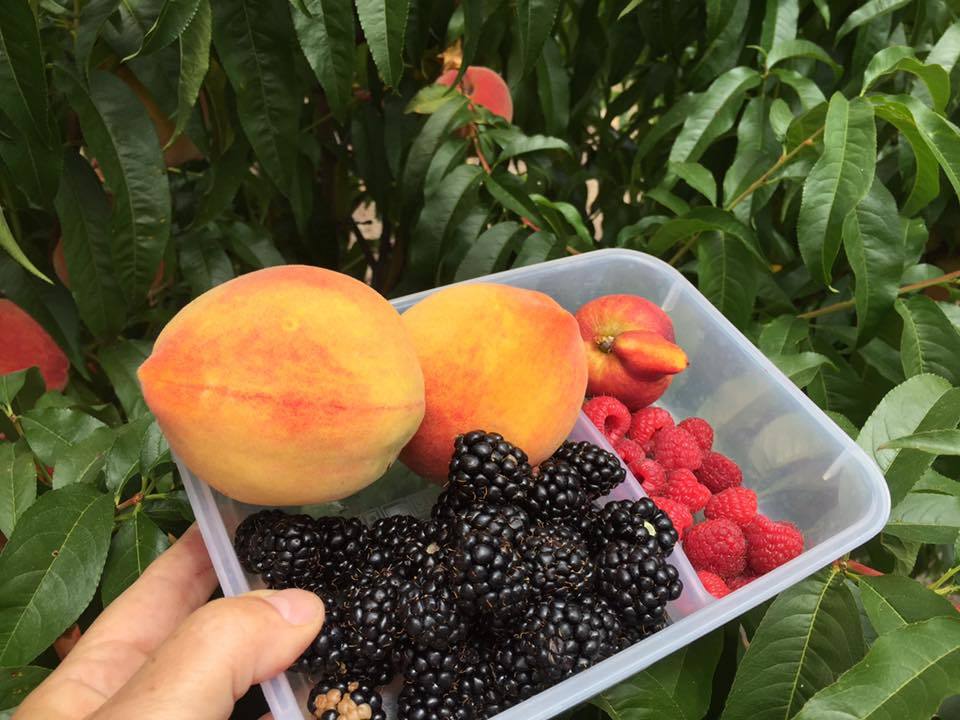Well there’s no trees in the fire pit so that’s a good sign!
If the White Winter Pearmain turns out to be bland and mushy, graft it over to Yellow Newtown Pippin or GoldRush.
Never had that problem in the 9 years I’ve been growing them in this region - nor did any of my customers.
I remember when you were looking! Congrats!
What a impressive plants layout, everything is so neat. What do you do with so many fruits? Have a party and we are all invited?
Do your neighbors think you’re crazy? I think it’s amazing, but not everyone appreciates those who grow their own food.
I get a lot of comments from the neighborhood, but never along the lines of “crazy”. The couple who bought the house next door a year after I moved in have begun down the same road. Another couple living about a dozen houses away are long-time members of the CRFG – in fact he was here today trading notes … 
Some updated hardscape plans.
Black = existing.
Gray = new brick or masonry.
Tan = 3/4" recycled concrete (actually ~white).
Parquet = Tuscany brick patio.
Green = putt-putt course.
Among the trees I planted over the last couple years are 10 “pit” fruits: Apricot, Pluot, NectaPlum, Plum, Aprium, White Nectarine, Peach, Yellow Nectarine, and 2 Cherries.
Today I finished pruning them all back to 5’ high. Eventually I’ll restrain them to 8’, but for now they have some more training ahead.
Now that all those fresh cuts have been exposed on the trees, I’ll spray them down with 1/8 teaspoon of copper hydroxide (Kocide) total.
Richard, can you comment on summer vs winter pruning reasons? For some reason I thought dormant pruning was preferred but now I’m reading summer is better for size control.
@Lids, In our climate I find both are essential because the trees grow relatively fast. In terms of shaping trees I follow R. Sanford Martin’s guide to a T. However, for “pit” and “pome” fruits I also employ summer pruning for both training of young trees and total height control of mature trees. For these trees at my new home, they are at the stage of being topped at what most orchardists would call the top of the second scaffold; i.e., 5 feet. If I did not, many of the whips would be approaching 20’ high by the end of October (for those who are not aware: the daytime temperatures here are still easily in the high 70’s). So I top them now. I’m guessing that in October there will be whips near 8’. Fine. In January I’ll perform selective pruning as is so well described by R.S. Martin. Next summer I’ll decide whether there is enough infrastructure to control them at 8’ permanently or take them back down to 5’ for another year of training. I know that there are orchardists who successfully use “branch weighting” methods to shape their trees in their climates but due to the heavy bearing (thinning required) of properly maintained trees here, I find it unnecessary.
For anyone who takes a look at Martin’s book – reading the few pages on the training of young trees is a must – and note that as stated in each fruit section of the book the “training” does not apply to all trees.

That’s really helpful, thank you!
Richard, I just went to the plantsthatproduce.com website looking for information on your irrigation system. I’m afraid I failed in finding it, I only saw advertisements and nothing mentioning irrigation. I used the link you gave but that only lead to advertisements. I tried many topics but nada. Is there a secret entrance somewhere?
Also, where do you get the 25 gal containers that you use?
John
John,
I began this thread in April 2015 but retired in April 2016, disposing of plantsthatproduce.com on the way.
I bought the 25-gallon pots by the pallet from wholesale locally from Agricultural Horticultural Supply but of course they are available from other wholesalers nationwide.
What details would you like to know about the irrigation system?
Richard, there wasn’t anything specific that I wanted to know about your irrigation system. I was just curious. I’m always looking for ideas. But I am wondering if it’s an automatic system connected to a soil moisture sensor(s) or just pipes connected to a faucet that you turn on when it’s needed.
Yeah, plantsthatproduce.com does not have a genuine smell to it. But because of the many marijuana growing ads I did wonder for a minute why you didn’t have more yard space devoted to that plant.
Checking the AHS catalog, it looks like their 25 gal containers are blow molded, which I’d think would be flimsier than injection molded. Did you find them robust enough for your fruit trees?
John
@jbclem, here’s an ongoing thread about my irrigation system … http://growingfruit.org/t/irrigation-combobulation
I don’t grow marijuana because (a) I don’t care for the drug, and (b) other vocations in agriculture are more profitable; e.g. fertilizer sales.
In my experience, the blow-molded 25 gallon pots work fine for shrubs and young trees. Being flexible it helps to have a dollie to move them.
Is Schisandra good, Richard? What do ya do with it?




